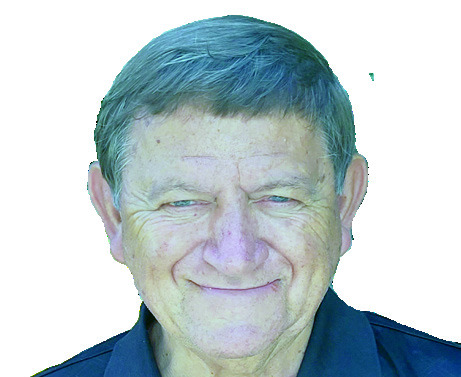Lynn Hilburn: Barry County history part III — The Indian influence on Missouri

In this column, I will talk about the people who occupied this land before the white colonization of the area.
As we all know, Missouri was a part of the Louisiana purchase, the land that the United States purchased from France. Therefore, there are many towns, cities and counties with French names and connections — our Indian heritage.
As most of you know, or have reasonably determined, Missouri was named after the Indian tribe called the Missouria. The Missouria tribe was originally located in the Great Lakes area. They were pushed out In the Ohio area to the Great Northwest Territory by the white expansion.
Then, they were pushed out of the Northwest Territory, and they settled around the intersection of Grand River and the Missouri River just west of Columbia. The Missouria were not only hunters and trappers, but they were also farmers who harvested corn, beans and squash, so they enjoyed this rich farmland.
I don’t know about you, but I always wondered why the English (and even the early French) explorers tended to go north to the colder weather of the Northwest Territory and Canada, instead of going to the south toward Virginia or Florida. Apparently, it was because this is what they were accustomed to. Great Britain, and even France, are several miles farther north than even the north tip of Maine, so this was the weather they were used to.
As a result, several of the Eastern and Northern Indian tribes were being pushed or relocated to the South and to the West, and the Missourias relocated to central Missouri.
The Missouria tribe, the Otoe, the Illiniwek (the Illini), the Quapaw (the Kaw or Kanza, Kansa), the Ayoua (the Ioway), as well as several other tribes were essentially a part of the great Sioux Indian congregation, because they spoke, or speak, the Dhegiha Siouan language.
The Missourias were known as the “people of the large dugout canoes.”
Most canoes were lightweight and made of cedar internal wood stiffeners (because cedar was resistant to water rot), birch bark sewn together shells, covered with many layers of tree sap. These canoes were light enough that they could be carried by two men across the shallow rapids that existed on some of the smaller streams.
The Missouria liked to travel on the larger streams, so therefore they needed the larger “dugout” canoes.
Of course, Missouri does not mean big, wide and muddy river. The state and the river were named after the Missouria Indians. An historical note, the Missouria Indians were the first Indians that Lewis and Clark met and traded with on their 2-plus year long expedition after the Louisiana Purchase.
Since Lewis and Clark are part of the history of Missouri, let’s talk about them for a minute. Lewis and Clark knew that if they were to get all the way to the West Coast, they would have to have an interpreter, and therefore, they hired Toussaint Charbonneau, a French Canadian who claimed to speak several Native languages, and one of his wives, Sacajawea, who spoke Shoshone, Hidatsa, French and English.
Charbonneau did not always prove to be reliable, but Sacajawea, pregnant and even after having delivered the baby, stayed with the expedition the whole trip, even back to St. Louis. Clark became the godfather and caretaker for the boy, Jean-Baptiste, when they got back to St. Louis, and saw to it that he received an education.
Many historians believe that the success of the Lewis and Clark expedition depended largely upon the fact that Sacagawea and her child were with them on the expedition. The Indian tribes that they encountered along the way felt that the Expedition would not bring them harm since they were traveling with an Indian woman translator and her baby.
It is also told that Sacajawea saved many of Lewis and Clarks maps, notes and records during a near capsizing of her and her husband’s canoe.
Note that Meriwether Lewis was the second governor of the “Missouri” territory, at that time known as the North Louisiana Territory, and William Clark was the fourth governor of the Missouri Territory, from 1813-1820, just before statehood.
In addition to Sacajawea’s contributions, I’d like to spend a few minutes talking about the heritage and intelligence of the native Indians. As the country was being colonized by the Europeans in the 1600s and 1700s, the Iroquois Indians developed an Articles of Incorporation, combining six Indian tribes to help deal with the new people coming into the country.
One of these tribes was the Seneca tribe, which later found his way to southwest Missouri and northeast Oklahoma.
The uniqueness of this Iroquois Articles of Confederation was that they had one main chief, the five chiefs of each of the other five tribes had a vote in large decisions and the leader of each of the 50 or 60 sub-tribes could express their opinion on day-to-day activities.
It kind of sounds like executive, judicial and congressional branches of decision making, doesn’t it?
The Articles also laid out some of the rights of individuals, including women. In some of the sub-tribes, women had a vote as to who the new chief or leader would be (in 1700, pretty advanced thinking, huh?).
The Iroquois Articles of Confederation were so good that Benjamin Franklin and Alexander Hamilton used them and the Magna Carta in developing the first United States Articles of Confederation.
In addition to Sacajawea, here are other examples of Indian leadership and intelligence.
The Five civilized tribes had their own court and justice system, and the Cherokees even had their own written alphabet.
In the 1870s, Sitting Bull and Chief Crazy Horse utilized their leadership skills and gathered over 10,000 Sioux and Cheyenne warriors (with probably a dozen different dialects to deal with and understand) as they tried stopping the settlement of the land and the laying of a northern railroad line from crossing what they considered as Indian land.
A few years after most of the Indian tribes did finally make peace and were on reservations (the 1880s), the wise Sitting Bull, who spoke several Indian dialects as well as English, joined the Buffalo Bill Wild West Show, making $200 a month (approximately $5,500 per month in today’s money) for signing autographs and for riding around the arena wearing a full headdress.
Not bad for a young man who was raised out on the plains with no formal schooling. Sitting Bull is someone I wouldn’t have liked to have met. How did he get so smart?
Back to southwest Missouri history. Between the years 1000 to 1750, the area between the Red River and the Missouri River from the Mississippi to Kansas was well occupied by the Osage Indians. This area, of course, includes southwest Missouri and Barry County. Remember also that the Osage River was damned to make the Lake of the Ozarks.
The Delaware Indian tribe also had a large settlement in western Stone County and eastern Barry County, and many of the people of the five civilized tribes, especially the Cherokee tribe, left the Trail of Tears wagon trains and settled in southwest Missouri. This included one set of my great-grandparents.
There is not much evidence that the Missouria tribe came down as far as Barry County, but in the 1700s, they did cross the Missouri River to settle in the area around Booneville and Marshall. Because they were farmers as well as hunters, they traded with the Osage, but they were frequently attacked by other Indian tribes, especially the Sauk and Meskwaki tribes.
Also, they were devastated by an outbreak of smallpox, such that their population was down to just a few hundred. As a result, they joined with the Otoes, to form the Otoe-Missouria tribe. As more people settled in central Missouri, especially along the Missouri River, after statehood the tribe was moved to a reservation in Nebraska for a while, and then to a reservation near Red Rock, Okla.
In the next installment, I will talk about the derivation of the names of places around Missouri, why the county seat is located where it is, why counties are the size they are and why there is more than one school in each township.
Lynn Hilburn is an officer in the Barry County Genealogical and Historical Society, and invites all to come and join meetings, to provide information about their families or to look up information about their families. Hilburn may be reached at hlhilburn@hotmail. com






